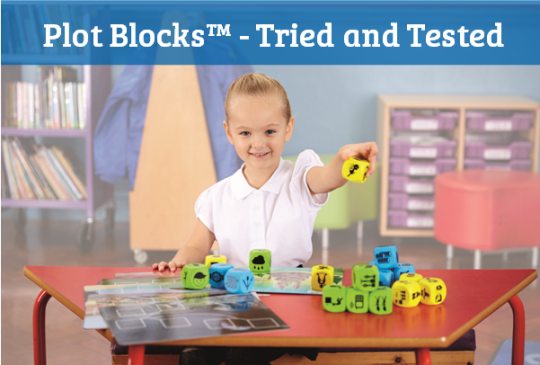
Simple Storytelling Tips for Parents
- Learning Resources Posted On Jan 28, 2021 | Learn
Storytelling isn’t hard. You might think you can’t tell a story, but you tell them all the time. When you tell someone about your day, when you talk about a movie you saw, and even when you tell a joke. With these simple storytelling tips for parents, you’ll find easy, fun ways to bring storytelling to life for your child.
Simple storytelling tips for parents
Storytelling is about answering questions and letting your imagination go. What if…? questions are especially good, and the more bizarre, the more children will love them. What if dogs could fly? If your shoes were made of cheese? What would happen if a mouse saw you on the way to school? Would it chase you? Would it try to eat your shoes? What would happen next?
Yes/no questions work, but prompting questions that start with who, what, where, why, and how will help you create an engaging storyline though active participation. Try these:
- How does this character feel?
- What happens next?
- Why did that character say or do that?
- What would you do if someone did or said that to you?

Image: Getty
Creating stories by combining ideas
Get your kid to finish questions such as “wouldn’t it be great if…?” (rain was made of chocolate), “if you could have a superpower, it would be…?” (flight), “if you could go anywhere, you could go to…?” (the Moon). Put those answers together and you’ve got the start of a story: your child is flying to the Moon, but chocolate rain gets in their way. Then you follow it with the classic storytelling go-to question: what happens next?
Don’t worry about making sense
You aren’t creating a bestseller. The stories you and your child come up with can be weird, wonderful, even confusing. The focus should be on having fun. If something in the story doesn’t make sense, you can gently ask your child to explain, but don’t push it. They’ll learn this in time. Focus more on the emotional elements such as how did that character feel, how would you feel if that happened to you.
Simple storytelling tips and prompts to try today:
- Tell your child a story about them when they were little, such as the day they were born. These stories provide rich emotional links and will keep your little one engaged.
- Tell your child a story about you when you were little.
- Create a story with your child as the main character or adapt an existing famous story with your child as the star.
- Use physical prompting aids such as Plot Blocks Story Building Activity Set.
- Give characters different voices to make them come alive.
- Don’t be afraid to use vocabulary your child doesn’t know. Storytelling is a fun way to grow your child’s language skills.
- Serialise your stories. Once a storyline has run a natural course, transplant characters to a new “what if?” scenario and start the process again.
- Tell stories everywhere – it’s a great way to keep kids occupied at the dinner table or on a car journey, and more.
Read more on why storytelling with your child is a fun activity to do every day, and get great ideas to encourage your child's creativity.
Useful links:
Main image: Getty
Storytelling isn’t hard. You might think you can’t tell a story, but you tell them all the time. When you tell someone about your day, when you talk about a movie you saw, and even when you tell a joke. With these simple storytelling tips for parents, you’ll find easy, fun ways to bring storytelling to life for your child.
Check out other related content on our blog:
Simple storytelling tips for parents
Storytelling is about answering questions and letting your imagination go. What if…? questions are especially good, and the more bizarre, the more children will love them. What if dogs could fly? If your shoes were made of cheese? What would happen if a mouse saw you on the way to school? Would it chase you? Would it try to eat your shoes? What would happen next?
Yes/no questions work, but prompting questions that start with who, what, where, why, and how will help you create an engaging storyline though active participation. Try these:
- How does this character feel?
- What happens next?
- Why did that character say or do that?
- What would you do if someone did or said that to you?
Creating stories by combining ideas
Get your kid to finish questions such as “wouldn’t it be great if…?” (rain was made of chocolate), “if you could have a superpower, it would be…?” (flight), “if you could go anywhere, you could go to…?” (the Moon). Put those answers together and you’ve got the start of a story: your child is flying to the Moon, but chocolate rain gets in their way. Then you follow it with the classic storytelling go-to question: what happens next?
Don’t worry about making sense
You aren’t creating a bestseller. The stories you and your child come up with can be weird, wonderful, even confusing. The focus should be on having fun. If something in the story doesn’t make sense, you can gently ask your child to explain, but don’t push it. They’ll learn this in time. Focus more on the emotional elements such as how did that character feel, how would you feel if that happened to you.
Simple storytelling tips and prompts to try today:
- Tell your child a story about them when they were little, such as the day they were born. These stories provide rich emotional links and will keep your little one engaged.
- Tell your child a story about you when you were little.
- Create a story with your child as the main character or adapt an existing famous story with your child as the star.
- Use physical prompting aids such as Plot Blocks Story Building Activity Set.
- Give characters different voices to make them come alive.
- Don’t be afraid to use vocabulary your child doesn’t know. Storytelling is a fun way to grow your child’s language skills.
- Serialise your stories. Once a storyline has run a natural course, transplant characters to a new “what if?” scenario and start the process again.
- Tell stories everywhere – it’s a great way to keep kids occupied at the dinner table or on a car journey, and more.
Read more on why storytelling with your child is a fun activity to do every day, and get great ideas to encourage your child's creativity.



















